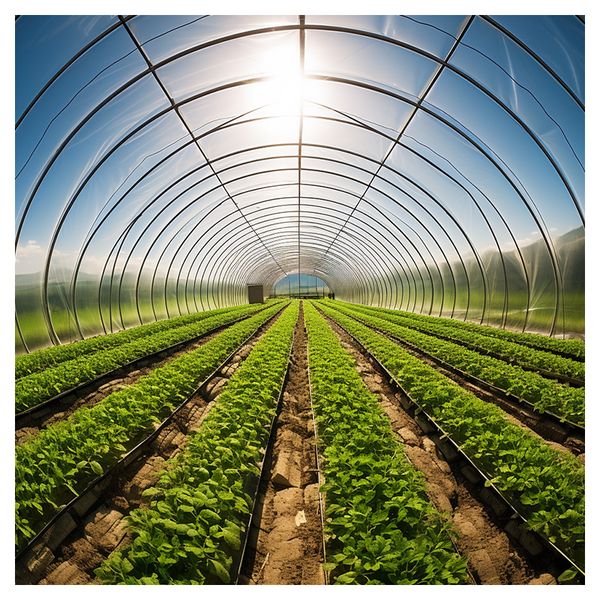In the realm of modern farming, greenhouse films have become essential tools for boosting crop yield and safeguarding plants. By creating a stable growing environment, they help farmers combat unpredictable weather and ensure consistent production. But what exactly makes greenhouse films indispensable? How do you choose the right one? Let’s explore the benefits, types, and key considerations in selecting greenhouse films.
What is Greenhouse Film?
Greenhouse film is a type of plastic sheeting designed to cover greenhouse structures, providing protection for crops. It helps regulate temperature, humidity, and light while shielding plants from harsh weather conditions like wind, rain, and frost.
Common materials for greenhouse films include:
Polyethylene (PE): Lightweight and cost-effective, ideal for short-term use.
Polyvinyl Chloride (PVC): Durable and reliable, though slightly more expensive.
EVA Film: Known for its excellent transparency and light transmission, perfect for crops requiring ample sunlight.
Key Benefits of Greenhouse Films
1. Boosts Crop Yield
By maintaining a warm and controlled growing environment, greenhouse films extend the growing season, allowing farmers to harvest earlier or later, enhancing market competitiveness.
2. Reduces Pest and Disease Risks
Greenhouse films act as a barrier against pests, reducing the need for chemical pesticides and promoting greener farming practices.
3. Saves Water
Greenhouse films minimize water evaporation, helping to conserve soil moisture and significantly lowering irrigation costs.
4. Shields Crops from Extreme Weather
From heavy rain to frost, greenhouse films provide essential protection for crops, ensuring consistent growth.
How to Choose the Right Greenhouse Film
When selecting a greenhouse film, consider the following factors:
1. Light Transmission
Light transmission determines how much sunlight crops receive, directly impacting photosynthesis. Films with high light transmission are ideal for sun-loving crops like tomatoes and cucumbers.
2. Durability
Opt for UV-resistant, anti-aging films that offer longer service life, reducing replacement costs.
3. Thickness
Choose the film thickness based on your region’s climate. Thicker films are better for cold areas, while thinner films suit warmer climates.
4. Eco-Friendliness
Premium greenhouse films are often recyclable, making them a sustainable choice for environmentally conscious farming.
Tips for Maintaining Greenhouse Films
Prevent Damage: Avoid sharp tools or objects during installation to prevent tears.
Regular Cleaning: Clean the film to remove dust and debris, ensuring optimal light transmission.
Prompt Repairs: Patch any damage immediately with specialized repair tape to prevent further deterioration.
Proper Storage: Roll and store unused films in a dry, shaded area to avoid exposure to sunlight and moisture.
The Future of Greenhouse Films
Advancements in technology are driving innovations in greenhouse films, such as:
Spectral Adjusting Films: These films optimize light wavelengths for specific crops, boosting photosynthetic efficiency.
Thermo-regulating Films: Intelligent films that maintain ideal temperatures for crops, ensuring precise climate control.
Biodegradable Films: Made from eco-friendly materials, these films are more sustainable and reduce environmental impact.
Conclusion
Greenhouse films are pivotal in modern agriculture, enhancing crop yield and promoting sustainable farming practices. By carefully selecting and maintaining the right greenhouse film, farmers can achieve greater efficiency and productivity. If you’re searching for high-quality greenhouse films, follow these tips to make the best choice for your agr




